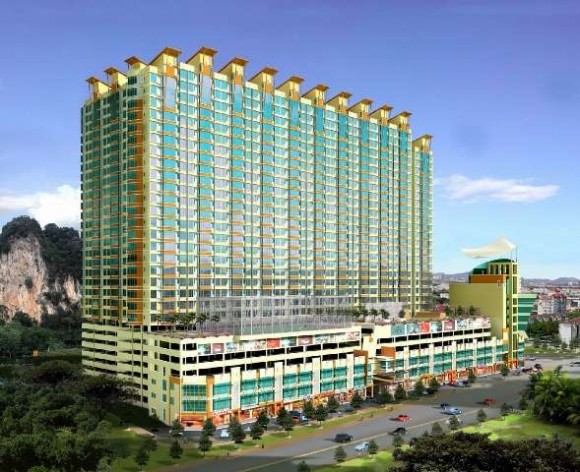AS the Chipsmore advertisement goes, “Now you see it. Now you don’t!” But when this quirky slogan is aptly applied to development projects, it doesn’t seem as funny.
For example, the Dolomite Park Avenue in Batu Caves was cancelled whereas the Atria Shopping Centre and the Carrefour centre in Kota Damansara were not, even though the latter two projects received a lot of protest from residents, too.

Public consultation was clearly lacking in the vetting of these projects. And finding one’s way around the local council and government system to get answers is a daunting process. What will it take for the system to improve?
Consultation required
All these projects had received their development order, so all technical problems would have been addressed by that stage. Yet the Batu Caves condominium was cancelled because an independent commission found public safety concerns.
This commission was only set up after there was widespread condemnation and protests.
What if there had been no protest? Would it have meant that the safety concerns would have gone unnoticed? If an incident similar to the Highland Towers tragedy occurred as a result, would the council argue once more that while it was negligent, it would be protected by the Streets, Drainage and Building Act from liability?
For these reasons and much more, development projects require public consultation. I quote the Total Planning and Development Guidelines Second Edition verbatim here:
a. All parties involved in planning and development activities should be sensitive towards the aspirations, wishes, suggestions and participation of the public in the planning and implementation of a project; and
b. A more effective and comprehensive approach should be devised in order to get public involvement in planning and development so that the actual problem facing an area (not only physical, facilities and infrastructure problems) can be identified and handled accordingly.
Getting technical
From experience however, this consultation process is more often conducted as a briefing session where the project developer inundates residents with technical jargon and does not provide any documentation for the residents to study.
It’s also not unusual for the local council to flatly deny interested parties any information at all by citing the Official Secrets Act. With the system being so ridiculously complicated and lacking in transparency, people have to go the extra mile just to be heard.

Here’s a recent example: I was asked to look at the Menara Warisan Merdeka project by a friend because the Kuala Lumpur City Hall (DBKL) refused to entertain the request of concerned residents and property owners.
All that is known about the project is that its planned construction is to be in the vicinity of Plaza Rakyat, Victoria Institution, Stadium Merdeka and Stadium Negara; it will be 118 storeys tall and will have six conditions attached to the project’s approval. Five of those conditions have been met. The remaining condition involves land acquisition.
But here’s what you may not know:
- The National Land Code says “reserved land” means land that for the time being is reserved for a public purpose in accordance with the provisions of section 62 or of any previous land law; (emphasis mine)
- The Government Gazette number 9286 and 9287, dated 30 November 1932, reserved the Victoria Institution land as a school reserve, and the National Stadium land as a people’s park reserve under the Land Code 1928. This Code was the land law prior to the National Land Code. (See the gazette thumbnails below.)


Since reservation of the land in 1932 is still valid, given the National Land Code clause that any land reserved under previous law still applies, DBKL cannot consider any proposal to develop the area other than what the land was reserved for.
Holding the government accountable
The information I’ve revealed here is accessible to the public, provided they know where to look. It is a time consuming process however, even for me. Furthermore, even though I have uncovered that information, getting the government to acknowledge it is difficult because I am just an individual who can be brushed aside and ignored.
When we look at the whole process, we can see just how difficult and daunting it is to keep the government accountable. Which is why it is even more troubling when no officer is being called to account over the cancelled Batu Caves condo project.
From a procedural aspect, there was negligence on the part of the council’s officers who were tasked with vetting the information. Since Selangor Menteri Besar Tan Sri Khalid Ibrahim’s decision to cancel the Batu Caves condominium made no mention of negligence or misconduct, it can be assumed that the politicians believe that the government system does not require an overhaul.

Without addressing these concerns, Khalid is essentially allowing the same problem to happen again in the future when other development projects are presented to the local council for consideration.
Fixing all this simply requires a two-part system of transparency and accountability. Firstly, there should be a charter detailing the process on how residents or interested parties can officially protest against a development project. This charter would have a checklist of things required from residents and a checklist of items, including relevant laws and applicable clauses, that would be provided to the residents to enable them to make informed decisions and opinions. To ensure accountability, there should be a specified group of officers handling this process; their names and contact numbers advertised clearly. Should the officers fail to perform their task and are found to be negligent in doing so, a punishment befitting the offence has to be meted out.
In the end, it is all about process and management. Otherwise the term “public consultation” is rendered meaningless. ![]()
Former MBPJ councillor KW Mak is aiming to run as an independent candidate for the Bukit Gasing state constituency in the coming elections. He plays by the government’s rules, even if the government doesn’t.

